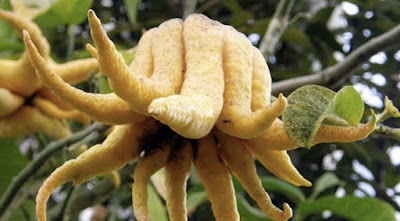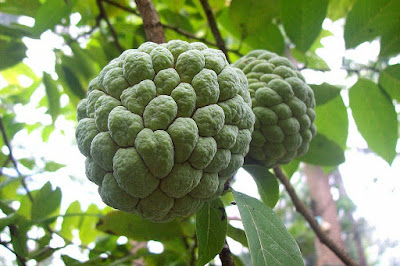Il nome proviene dalla sua forma tentacolare, ma questo frutto peculiare non è altro che una varietà di cedro che cresce su alberi di piccole dimensioni in Cina, Giappone e India.
Un profumo leggermente agrumato e alcuni usano anche la sua buccia, che viene candita. Frutto curioso che oltre in Asia potete trovare ormai anche in USA.
martedì 30 giugno 2020
venerdì 26 giugno 2020
Scimmia dal Naso Lungo (Nasalis Larvatus)
La nasica (Nasalis larvatus (Wurmb, 1787)) è una scimmia del vecchio mondo della famiglia Cercopithecidae, sottofamiglia Colobinae, diffusa nelle foreste tropicali del Borneo. È l'unica specie del genere Nasalis.
La caratteristica distintiva della specie è la grande appendice nasale pendula, particolarmente marcata negli individui adulti di sesso maschile nei quali, in età anziana, può raggiungere i diciassette centimetri.
mercoledì 10 giugno 2020
NOI-NA (o SUGAR APPLE) Frutta Esotica Strana
NOI-NA o SUGAR APPLE
Assomiglia ad un lampone verde la Noi-na. La particolarità di questo strano frutto è che una volta raggiunta la maturazione può essere diviso a metà senza coltello.Le dimensioni sono abbastanza grandi: si arriva addirittura a 10 cm di diametro.
La polpa del frutto è dolce, quasi fosse un crema e l'interno rivela tutti i suoi semi.
Sugar apple (Annona squamosa L.) is one of the most important fruits among the long lists of medicinal and nutritive fruits. Sugar apple is also known as:
sweetsop, sugar-pineapple, custard apple (Annona reticulata), aajaa thee, seureuba, plae teib, Gishta (ጊሽጣ), Zimtapfel, foreign lychee, anona blanca, قشطة (ishta), buah nona, noi-na, matomoko, hairico, Khirmish (خرمش), ekistaferi, kachiman, atis, annona guatemala, hvaðerþetta, matopetope, fasadabur, conicony, mãng cầu ta (na) sitaphal, sharifa, sitappalam, fruta-do-conde(fruta-pinha), ata, sitaphal, Katu Atha, srikaya, buah nona, pomme cannelle or pinyin.
martedì 9 giugno 2020
Device to Root Out Evil di Dennis Oppenheim
Device to Root Out Evil
Dennis Oppenheim
La scultura “Device to Root Out Evil” di Dennis Oppenheim, era stata inizialmente progettata per New York, poi dirottata a Stanford University ed infine trova la sua casa a Vancouver.
L’architetto è conosciuto come artista concettuale, specializzato nel campo della performance art, video art e Land art.
 |
| Device to Root Out Evil |
It was created as a sculpture by American artist Dennis Oppenheim. Initially called ‘Church’, it was proposed to New York City’s Public Art Fund, to be located in Church Street, where the artist lived. However, it was considered too controversial and so the name was changed and the sculpture fabricated and installed as part of the 1997 Venice Biennale.
Stanford University approved the purchase of the piece in 2003, but the decision was subsequently vetoed by Stanford’s president who judged it; “inappropriate for campus.” It was later installed in a public park in Vancouver, Canada as part of the Vancouver Sculpture Biennale in 2005, but again was dogged by controversy and was subsequently relocated to the Glenbow Museum in Calgary where it was on display until 2014. It was then moved in the Plaza de la Puerta de Santa Catalina in Palma, Mallorca.
The 7.5m tall sculpture is fabricated from galvanized steel, perforated metal and Venetian glass.
Oppenheim said of the work; “It's a very simple gesture that's made here, simply turning something upside-down. One is always looking for a basic gesture in sculpture, economy of gesture: it is the simplest, most direct means to a work. Turning something upside-down elicits a reversal of content and pointing a steeple into the ground directs it to hell as opposed to heaven.”
Iscriviti a:
Post (Atom)




